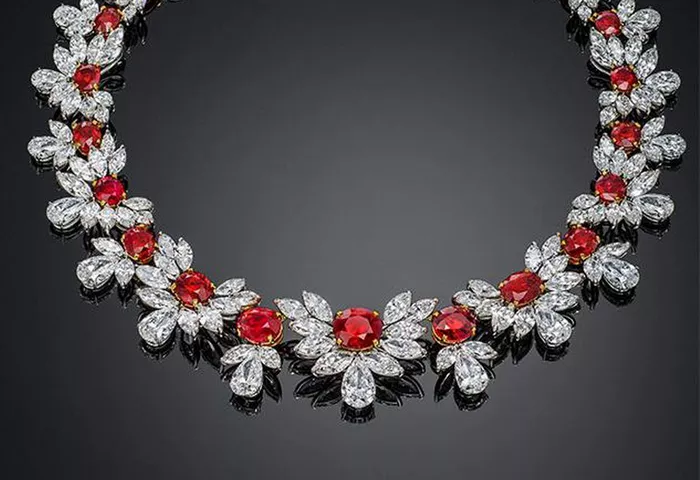Raw, uncut rubies are fascinating gemstones in their natural state. Understanding their appearance involves looking at various aspects such as their color, crystal structure, inclusions, and surface characteristics. Rubies are a type of corundum mineral, and their natural form can vary significantly from the polished and faceted versions commonly seen in jewelry.
Color
Shades of Red
The most characteristic color of a raw ruby is red, but this red can come in a wide range of shades. It can be a deep, rich crimson, which is highly prized. This deep red color is often associated with high – quality rubies. Some raw rubies may have a lighter red hue, approaching pink. This lighter shade can still be a ruby, but it may be of a different quality level.
The color distribution within a raw ruby can also be uneven. There may be areas of more intense red and areas where the red is more muted. For example, in some specimens, the core of the ruby may be a darker red, while the outer edges have a lighter, more pinkish tinge.
Secondary Colors
In addition to red, raw rubies may also exhibit secondary colors. Sometimes, a slight purple or orange undertone can be seen. The presence of these secondary colors can add complexity to the overall appearance of the ruby. A ruby with a purple undertone may have a more regal or mysterious look, while one with an orange undertone may seem warmer or more vibrant in a different way.
Crystal Structure
Hexagonal Prism
Raw rubies typically have a hexagonal crystal structure. This means that they often form in the shape of a hexagonal prism. The sides of the prism are usually flat and smooth, and the ends can be either flat or pointed. The hexagonal shape is a characteristic feature that can help in identifying a ruby in its raw form.
The length and thickness of the hexagonal prism can vary. Some rubies may be long and slender, while others may be shorter and more stubby. The ratio of the length to the width of the prism can also affect the overall appearance of the raw ruby.
Crystal Faces
The crystal faces of a raw ruby are important in determining its appearance. These faces can be smooth and shiny, reflecting light in a particular way. The angles between the crystal faces are also significant. They can give the ruby a distinct geometric look. Sometimes, the crystal faces may be slightly curved or irregular, which adds to the natural and unpolished charm of the raw ruby.
Inclusions
Common Inclusions
Raw rubies often contain inclusions, which are small particles or features trapped inside the crystal. One common type of inclusion is rutile needles. These are thin, needle – like structures that can be seen within the ruby. They can give the ruby a silky or hairlike appearance when viewed under certain lighting conditions.
Another type of inclusion is zircon. Zircon inclusions can be small, rounded particles. They can sometimes cause a star – like effect when the ruby is cut in a particular way, but in the raw state, they are just part of the internal makeup of the ruby. Inclusions can also include other minerals or gas bubbles.
Impact on Appearance
The presence of inclusions can significantly affect the appearance of a raw ruby. They can make the ruby look cloudy or less transparent in some cases. However, in other cases, the inclusions can add character and uniqueness to the ruby. For example, a raw ruby with a pattern of rutile needles can be considered more interesting and valuable in some collectors’ eyes.
Surface Characteristics
Roughness
As the name implies, raw rubies are uncut and unpolished, so their surfaces are rough. The roughness can vary in degree. Some raw rubies may have a relatively smooth – ish surface, while others can be very jagged. The roughness is due to the natural growth process of the ruby and the fact that it has not been shaped or smoothed by human hands.
The rough surface can catch and scatter light in different ways compared to a polished ruby. It gives the raw ruby a more earthy and natural look. When light hits a rough – surfaced ruby, it may create a diffused glow rather than the sharp, sparkling reflections seen in a cut and polished ruby.
Mineral Deposits
Raw rubies may also have mineral deposits on their surfaces. These can be other minerals that have adhered to the ruby during its formation or over time. For example, there may be small amounts of quartz or feldspar attached to the ruby. These mineral deposits can further add to the natural and unrefined appearance of the raw ruby.
Conclusion
In conclusion, a raw uncut ruby has a unique and complex appearance. Its color can range from deep crimson to lighter pinkish – red with possible secondary colors. The hexagonal crystal structure with its characteristic faces gives it a geometric shape. Inclusions add both character and potential limitations to its transparency, and the rough surface and possible mineral deposits on it contribute to its natural, unpolished look. Understanding these aspects helps in appreciating the raw beauty of rubies and how they differ from their more familiar cut and polished counterparts.
Related topic:
- What Grade Ruby Is Best?
- Silver Ruby Eternity Ring
- Large Ruby and Blue Diamond Highlight Phillips Auction


